If you’re anything like me, you love a cozy home with a few plants in the mix. With a happy cat curled up nearby.
But if you’ve ever caught your furr baby nibbling on a leaf, you know the panic of wondering, “Wait… don’t eat that, is that safe?!”
The truth is, not all houseplants and cats mix well. Some can cause mild tummy upset, and others can be downright dangerous. When I adopted the first cat I’ve ever had, I had no idea what was what. What they should eat, how much they eat, how often they eat, and what they shouldn’t eat.
Whether you’re a new cat parent, recovering from a scare with a sick kitty, or just curious, here are 16 common indoor house plants to know…8 that are cat-safe, and 8 that are not so safe.
No one’s saying you need to toss all your plants, just maybe keep the risky ones at a safe distance.
Stick with me ’til the end…#8 on the toxic plant list… is a serious one that every cat parent needs to know about!
Worried about the most dangerous plants? I put together a separate guide with the most toxic (and potentially deadly) plants for cats. Click here to read it. (Coming soon)
Disclaimer: I’m not a veterinarian. The information in this post is based on publicly available sources and is meant for educational purposes only. If your pet may have ingested something toxic, contact your vet or the ASPCA Animal Poison Control Center immediately.
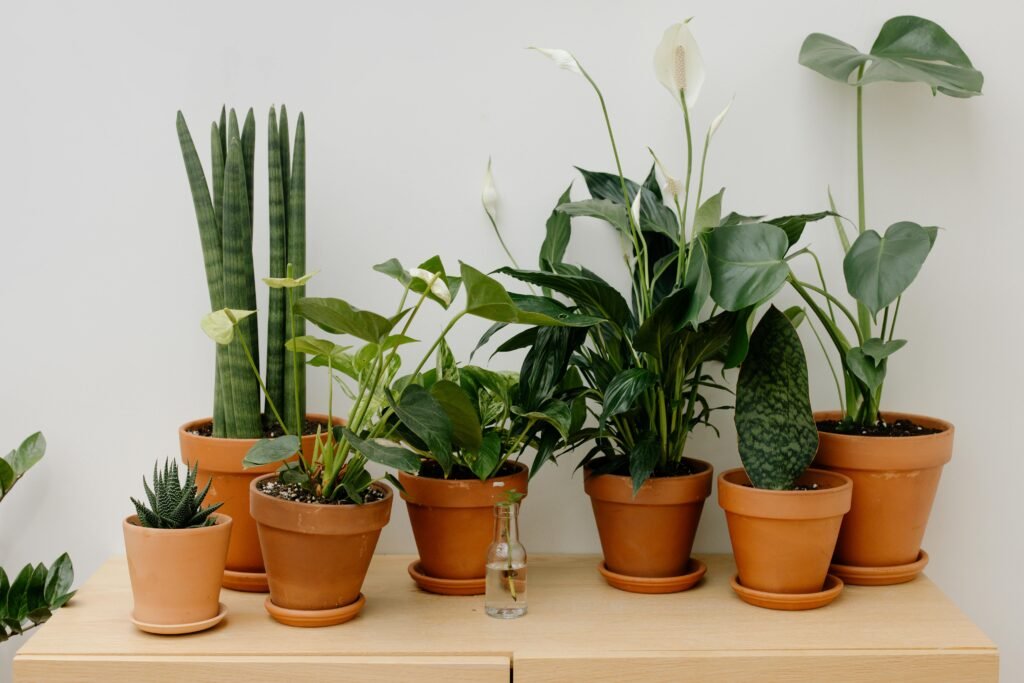
Affiliate Disclosure, I earn from qualifying purchases. This means if you click on a link and make a purchase, I may earn a small commission – at no extra cost to you. I only recommend things I genuinely love or use myself. Thanks for supporting this blog!
Cat-Safe Indoor Plants
These plants add life to your space without putting your curious kitty at risk.
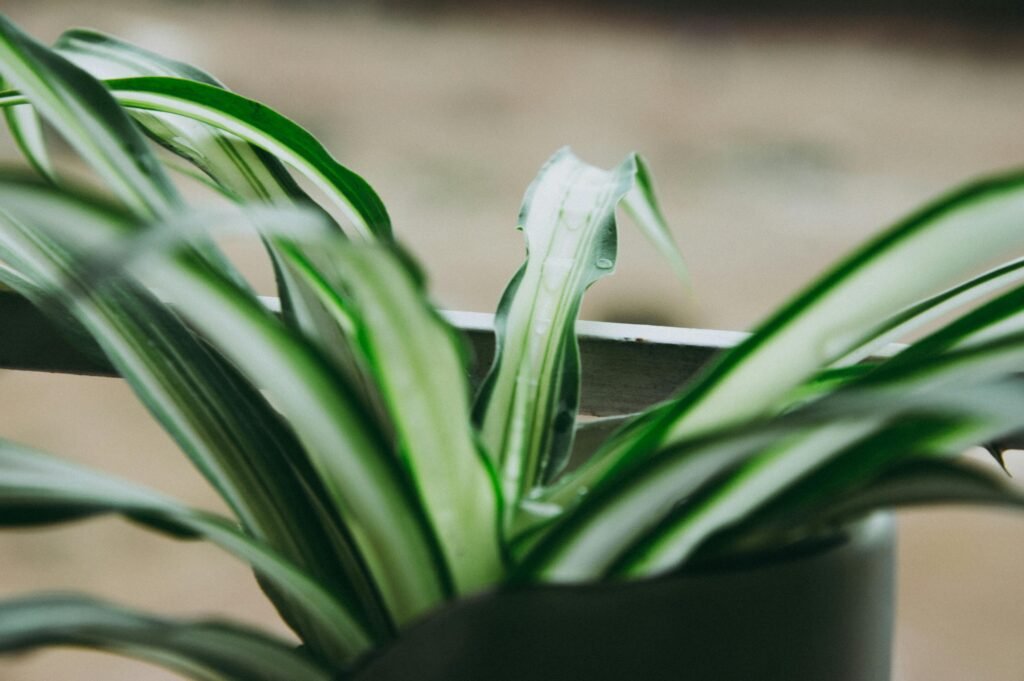
1. Spider Plant (Chlorophytum comosum)
Chances are, your cat’s already obsessed with this one. Spider plants are non-toxic and super easy to grow. Some cats even love to bat at the dangling leaves.
My cat Sushi loves to play with these leaves.
Tip: Keep it in a hanging basket to prevent too much chewing (and dirt digging).
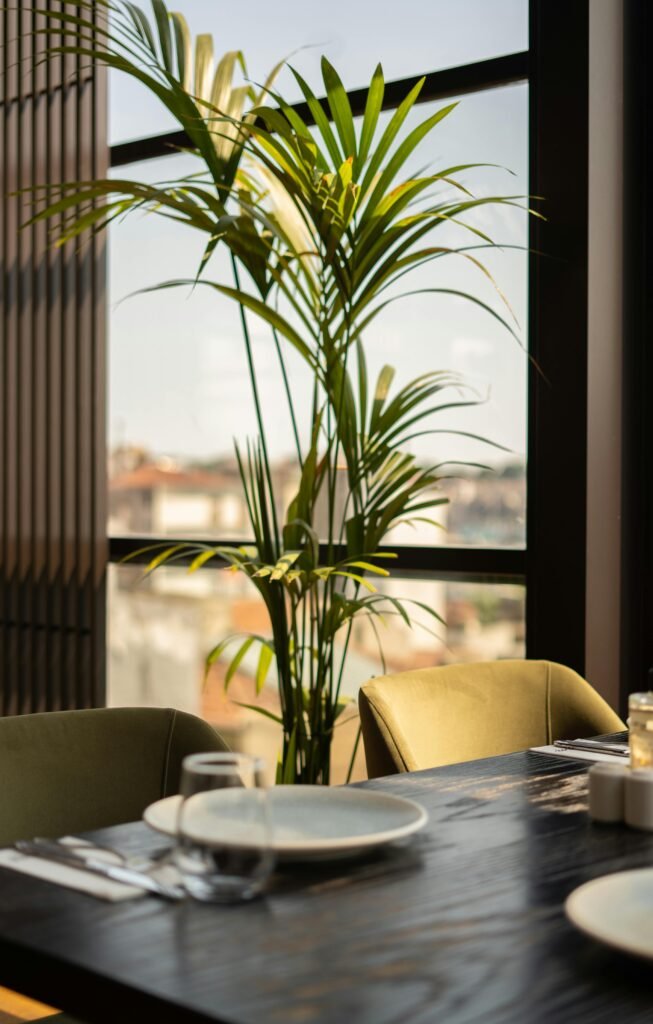
2. Areca Palm (Dypsis lutescens)
Also called the butterfly palm, this beauty brings tropical vibes without toxic drama. Safe for cats and humans alike, and they can grow to be quite tall.
As a plus it’s great at purifying the air.
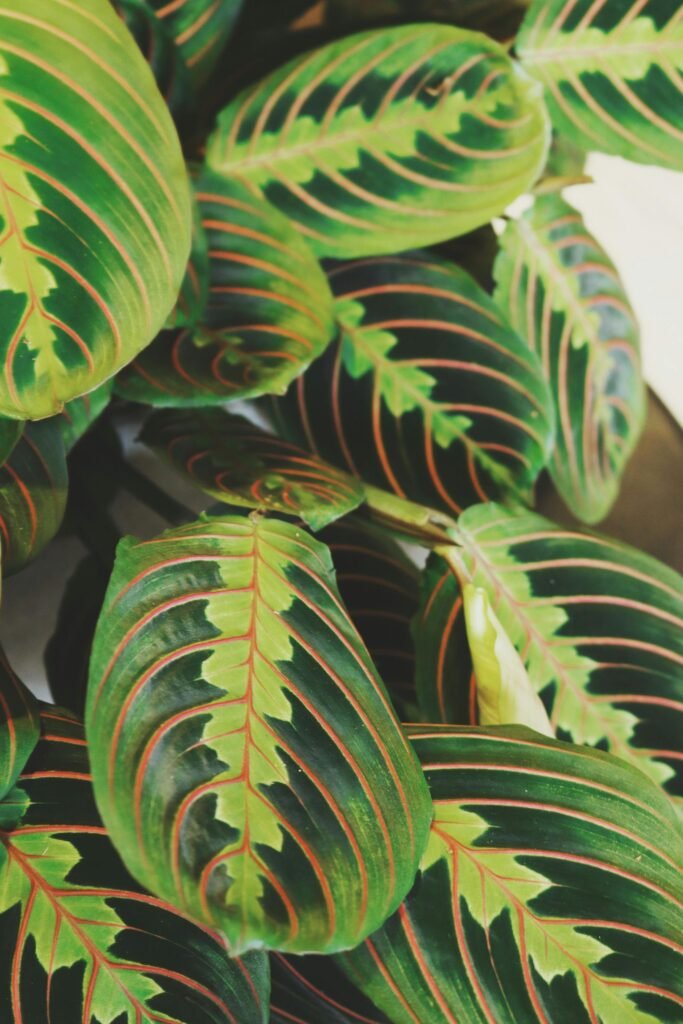
3. Calathea (Prayer Plant)
With their bold, patterned leaves and gentle movement throughout the day, calatheas are fascinating, and completely safe for pets. I just love the way they look.
Bonus: They love humidity, so they’re perfect for bathrooms or steamy windowsills.
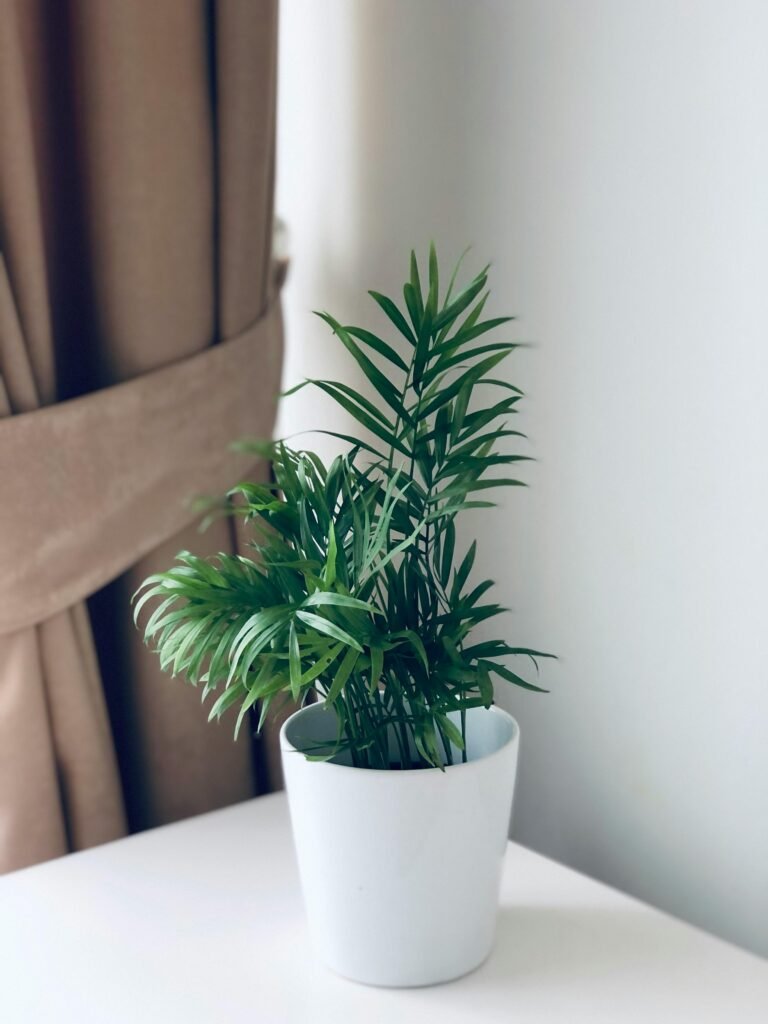
4. Parlor Palm (Chamaedorea elegans)
A petite palm that’s both elegant and non-toxic. It is more like a bush, compared to the Areca Palm that is more like a tree.
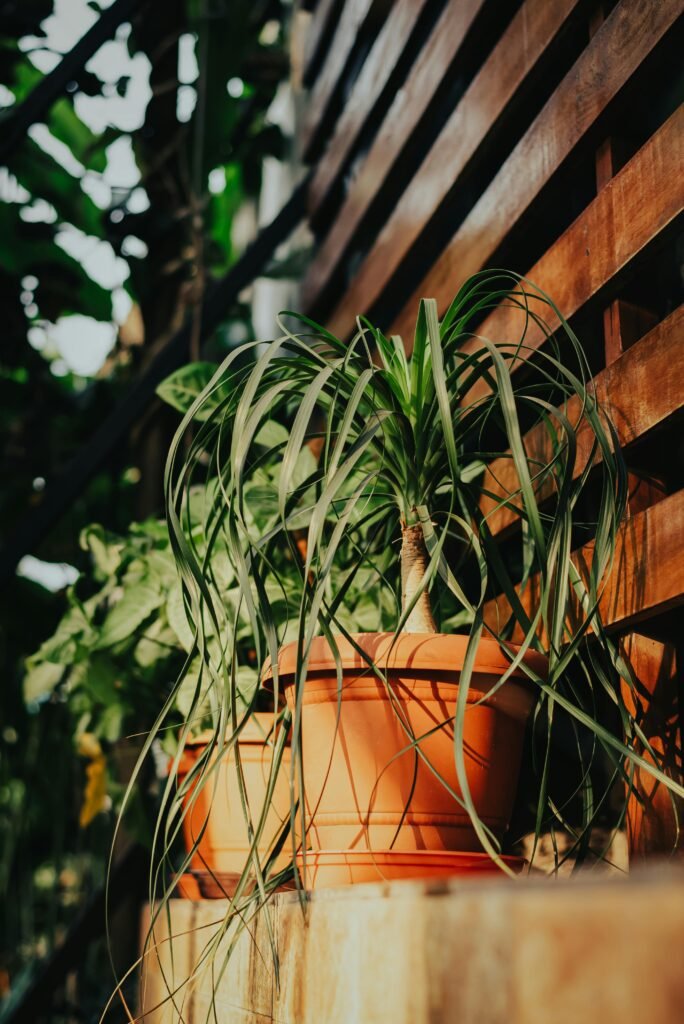
5. Ponytail Palm (Beaucarnea recurvata)
Cat-safe, low maintenance, and very beginner-friendly. It’s such an interesting and unique looking palm.
I had this one for a while…until I loved it a little too much with the water and gave it root rot.
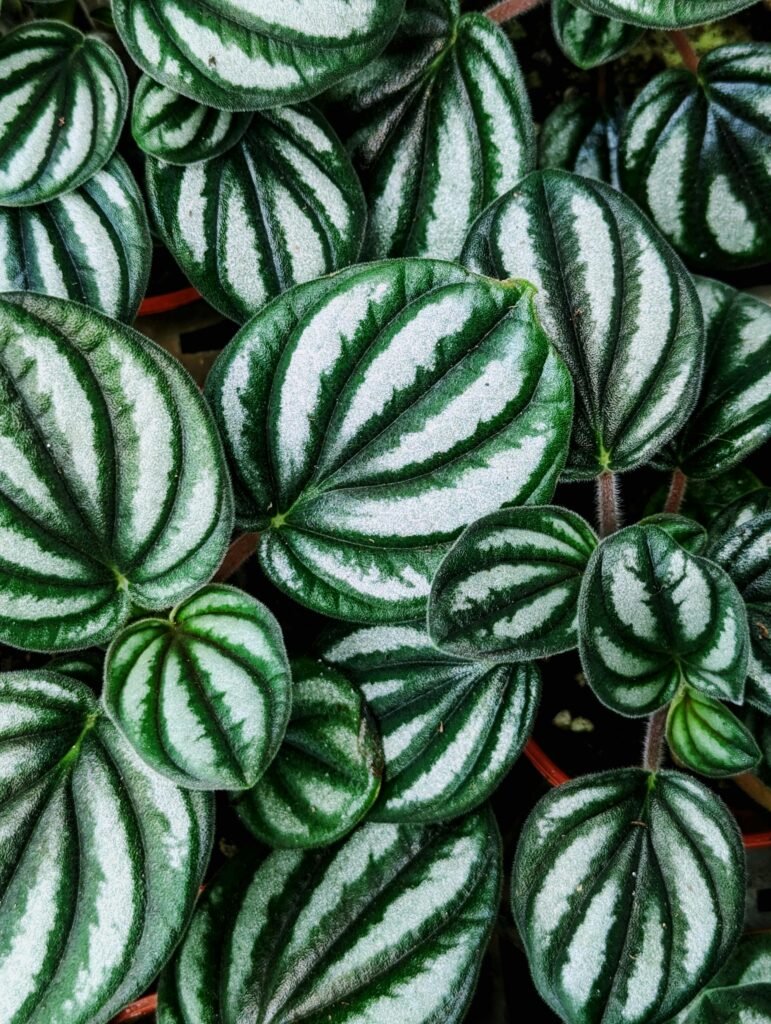
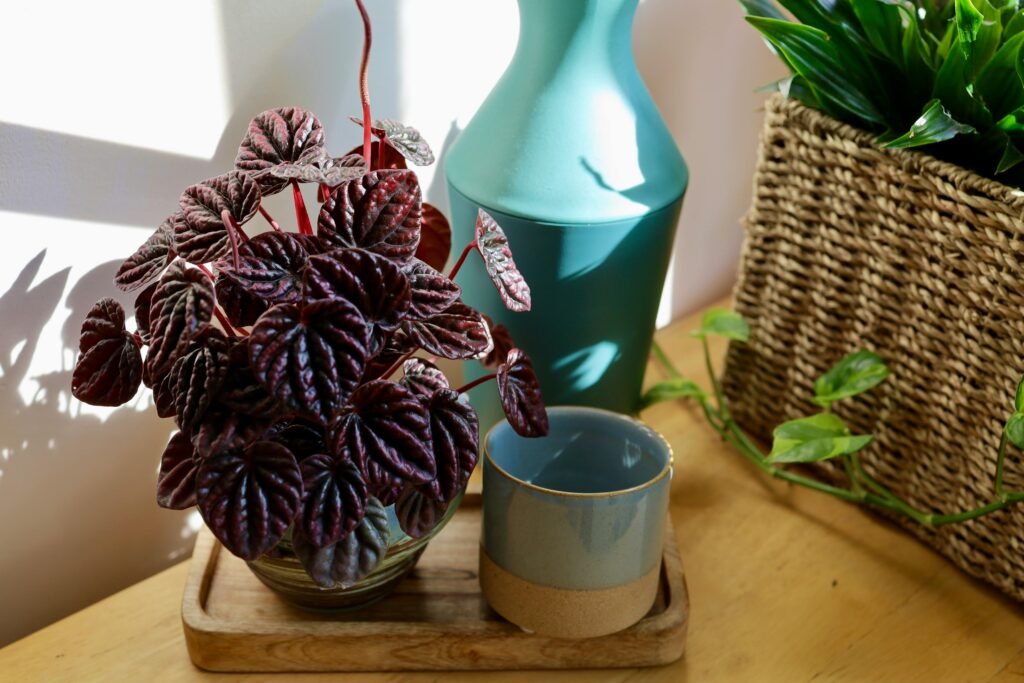
6. Peperomia (All varieties)
Compact, colorful, and safe, even the rubbery ones!
Some of them look like watermelons and some of them are textured. They are a really cool looking plant.
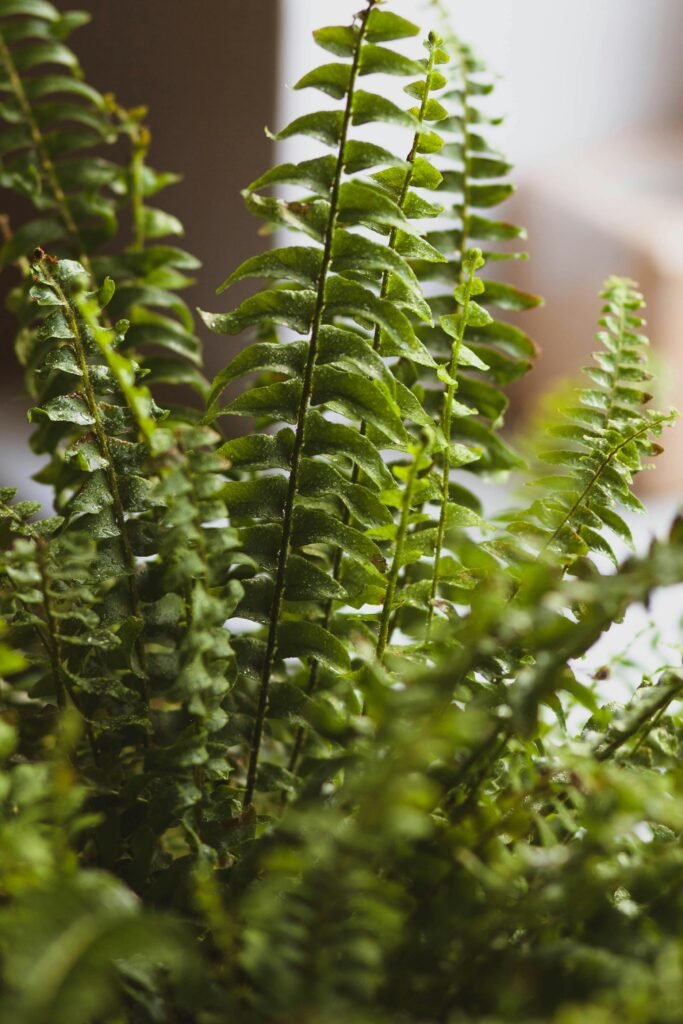
7. Boston Fern (Nephrolepis exaltata)
Soft, fluffy fronds and zero worries.
This is a great hanging plant!
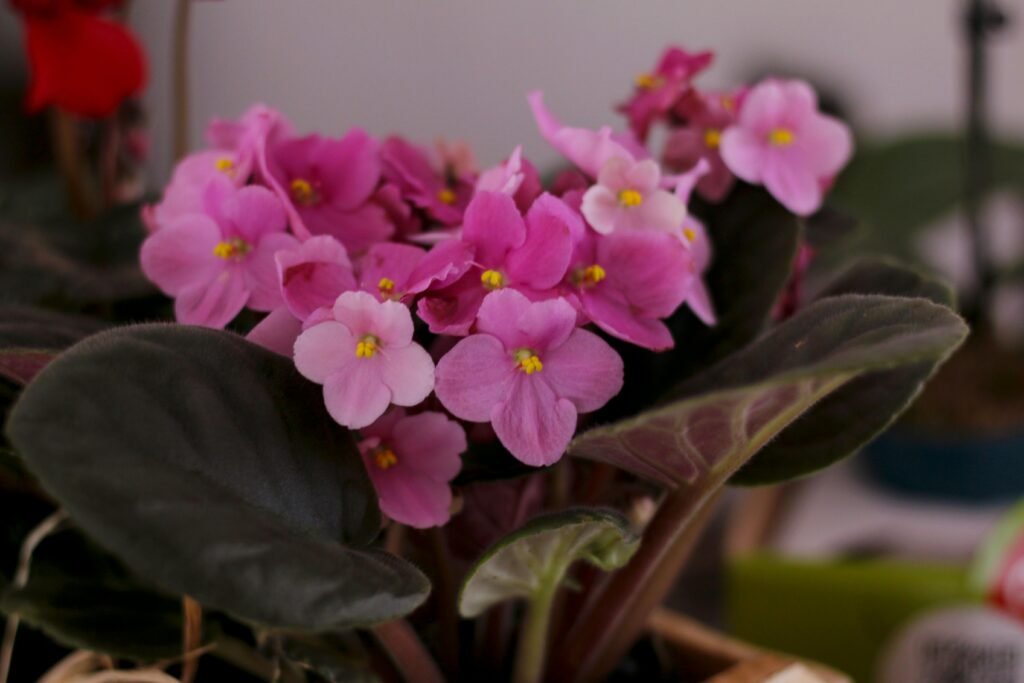
8. African Violet (Saintpaulia)
Petite purple blooms that brighten your home without harm.
They are a beautiful addition to any home if you want more or a flowering type plant.
📥 Tip: Add a cat grass planter nearby to give your kitty a designated chew zone.
🚫 Toxic Plants to Avoid
These might be beautiful, but they’re not the best choice for homes with cats. Even a little nibble could lead to serious side effects.
I’m not here to encourage you to buy any of these plants, so I won’t be linking to them. I just want you to know why they’re best kept far away from your curious kitty.
Most of the following plants contain insoluble calcium oxalates, saponins, or anthraquinones which causes:
Oral irritation
Excessive drooling
Pawing at the mouth
Vomiting
- Difficulty swallowing
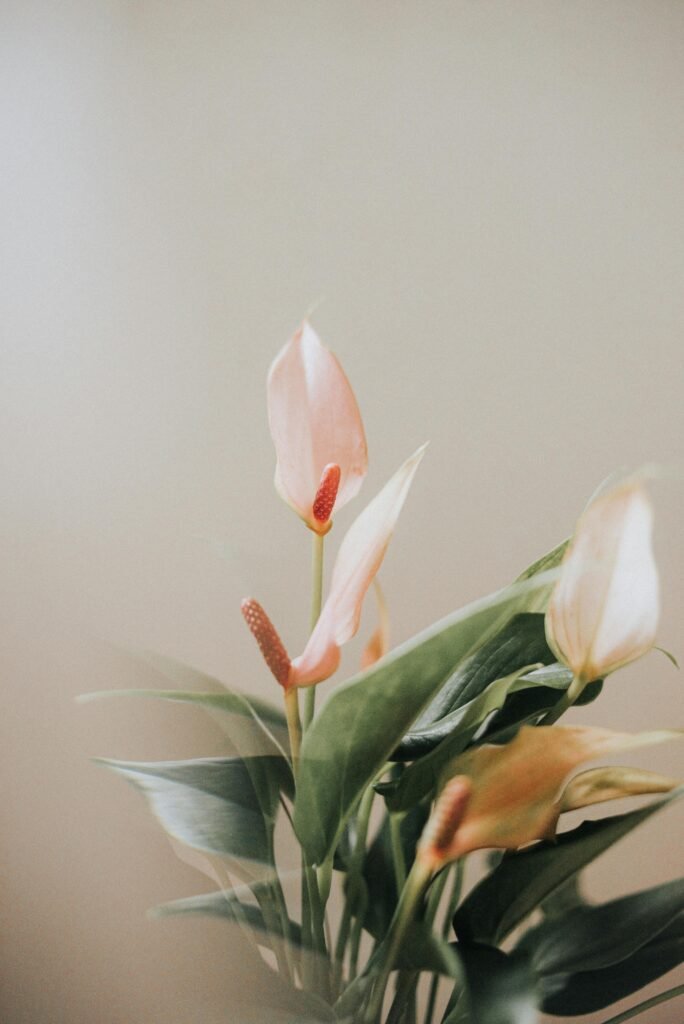
1. Peace Lily (Spathiphyllum)
The Peace Lily is one of the most popular houseplants out there, known for its elegant white blooms and air-purifying qualities. But if you have a cat, this one’s best admired from afar. These popular plants symbolize peace—but they don’t bring any to your vet bills.
And unlike some other lilies (which can be fatal), Peace Lilies are less toxic, but still cause significant discomfort and stress for your pet.
⚠️ Important Note:
It’s easy to confuse Peace Lilies with other types of lilies, like Easter Lilies, Tiger Lilies, or Asiatic Lilies—which are deadly to cats, even in small amounts. Peace Lilies aren’t as dangerous, but they’re still on the no-go list for any cat-friendly home.
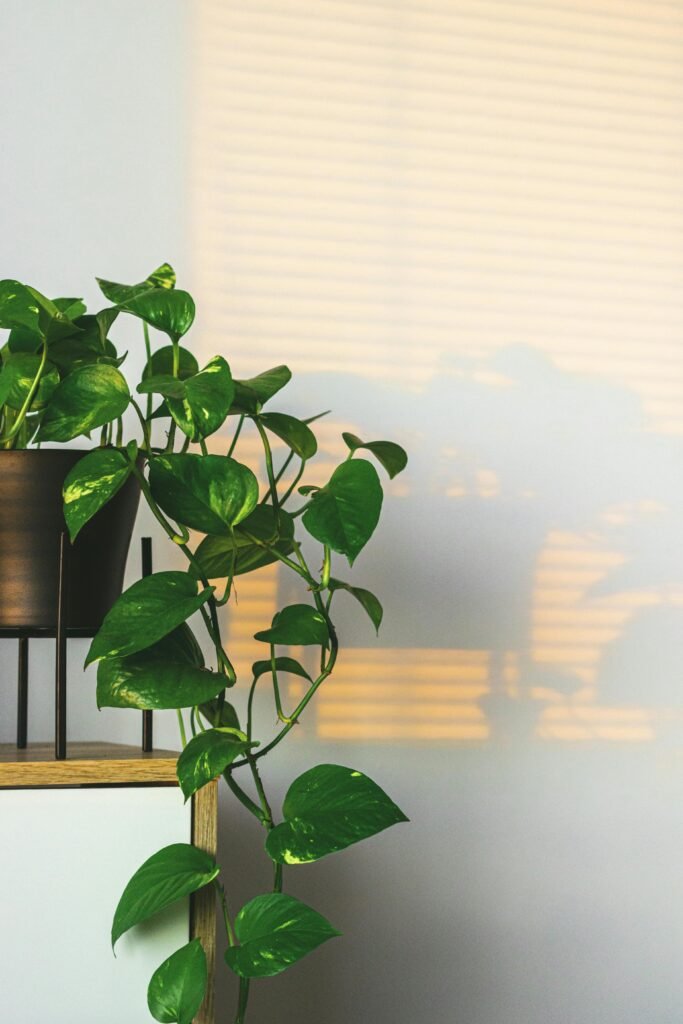
2. Pothos (Epipremnum aureum)
Also known as Devil’s Ivy, Pothos is one of the most common houseplants out there.
Pothos is trendy for a reason, it’s low maintenance, trails beautifully, and survives nearly anything… except a curious cat. It contains insoluble calcium oxalates that can cause irritation and swelling. Mine has be thriving off neglect for years.
Luckily Sushi doesn’t have interest in this plant at all, so got to keep it! I would have just moved it up high if you messed with it at all.
⚠️ The Problem?
Pothos vines love to trail and dangle, which is basically an open invitation for curious paws and playful chewers. Cats are naturally drawn to the movement and shape, making accidental contact even more likely.
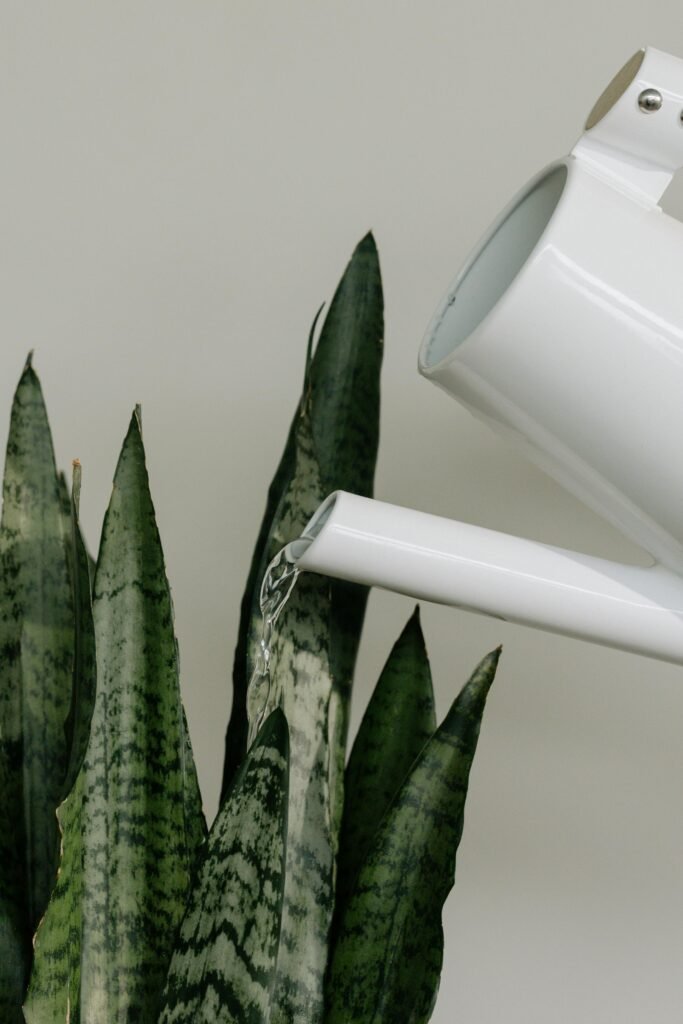
3. Snake Plant (Sansevieria trifasciata)
The Snake Plant, also known as Mother-in-Law’s Tongue, is one of those low-maintenance, trendy plants that looks good in every space. It’s sleek, architectural, and basically impossible to kill.
Tolerant and stylish but toxic if chewed.
⚠️ What Makes It Tricky?
Snake Plants are often placed on the floor or low tables—right within a cat’s reach. And their upright, sword-like leaves? Perfect for batting, chewing, or using as a surprise toy.
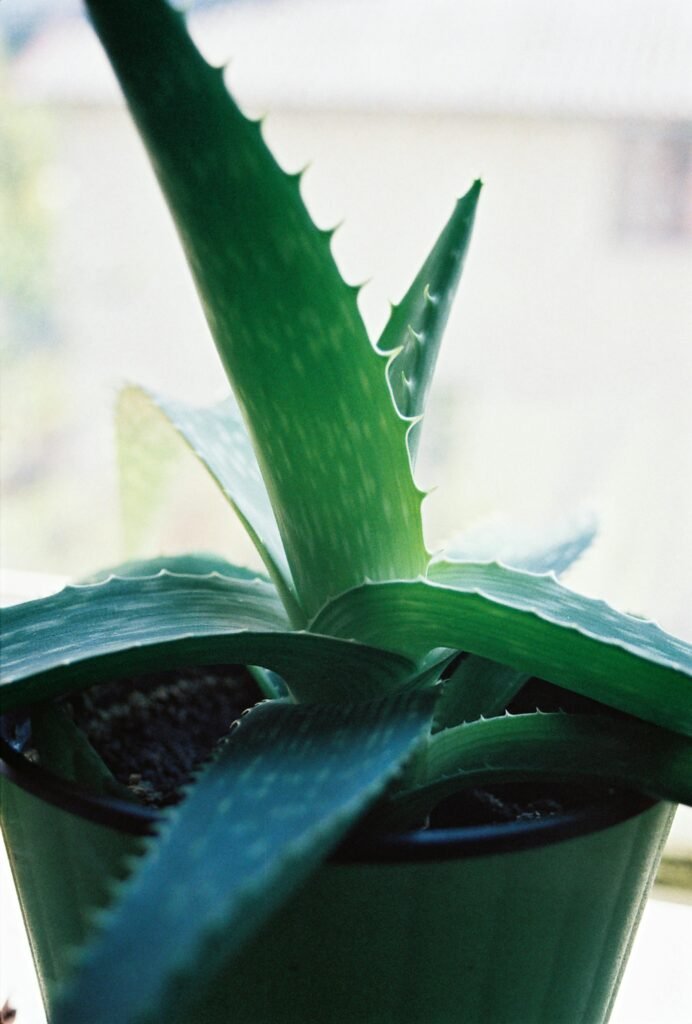
4. Aloe Vera
Great for sunburns, bad for cats.
The gel inside the plant is actually less toxic than the latex layer just under the skin, but when a cat chews on the leaf, they’re getting all of it.
⚠️ Why It’s Often Overlooked:
Since Aloe is widely known for being “natural” and “medicinal,” many people assume it’s safe for everyone, including pets. But sadly, what heals humans can hurt cats.
And if your Aloe is in a sunny windowsill or low pot? Your cat might be tempted to take a nibble when you’re not looking.
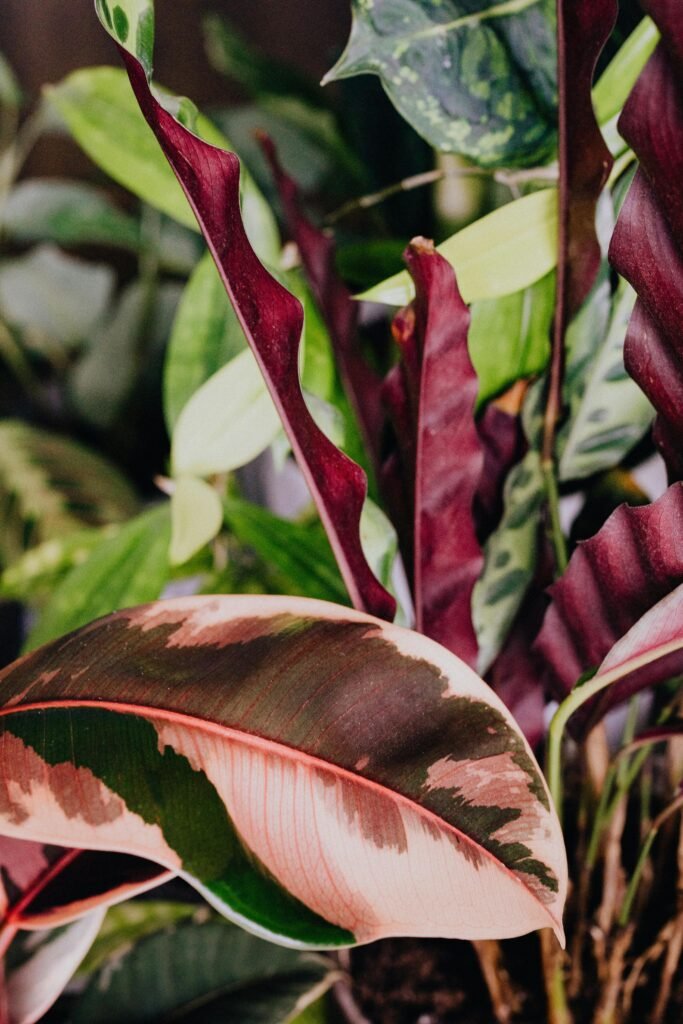
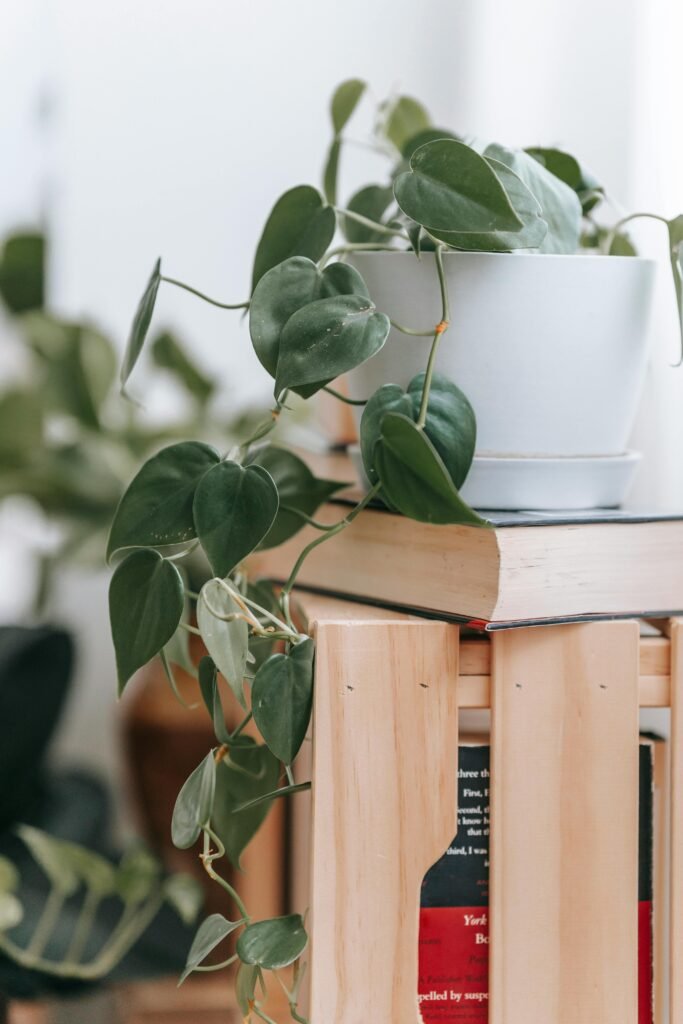
5. Philodendron (All types)
The Philodendron is a total heartthrob of the plant world.
Some have a velvety texture, deep green and purple leaves, and dreamy trailing vines, it’s no wonder plant lovers adore it.
But when it comes to cats? This beauty hides a harsh truth.
⚠️ Why It’s a Sneaky One:
Philodendron is often grown in hanging baskets or allowed to trail off shelves—tempting for playful or climbing cats. The soft texture and movement of the vines can be especially enticing.
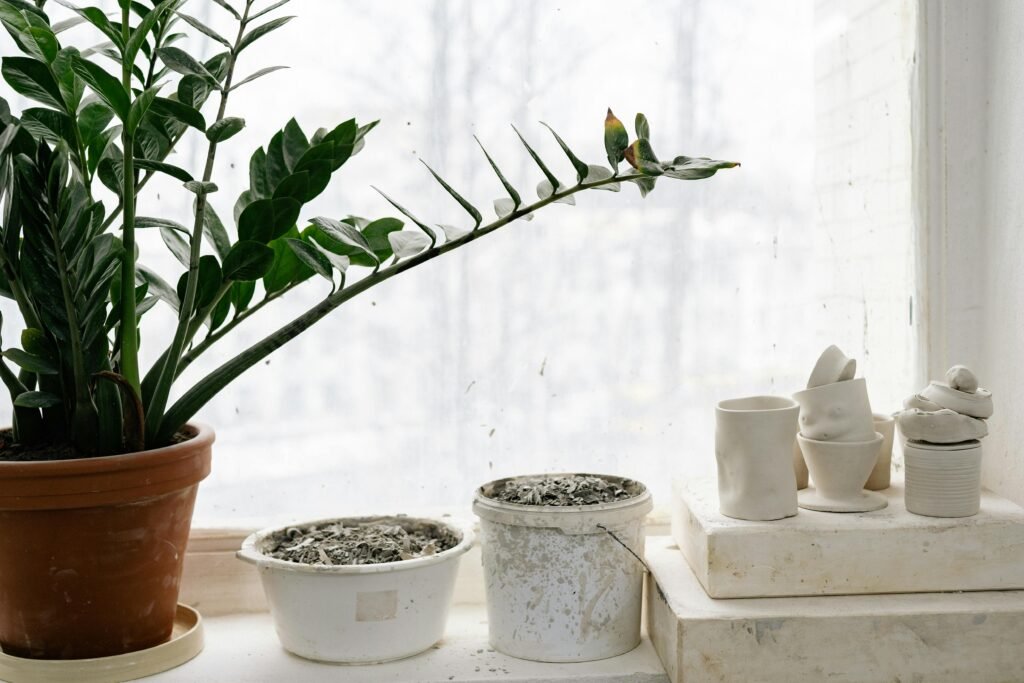
6. ZZ Plant (Zamioculcas zamiifolia)
The ZZ Plant is a favorite among plant lovers who want something virtually unkillable. It’s sleek, low-maintenance, and thrives in low light. But if you’ve got a curious cat? This one’s better left out of reach—or out of the house. Low light champion, but every part is toxic to pets.
The plant is toxic in all parts, leaves, stems, and even the roots.
⚠️ Why It’s Easy to Forget:
ZZ Plants look clean and nonthreatening, and they’re often marketed as the “set it and forget it” plant. But “forgetting it” in a cat’s reach could lead to an emergency vet visit.
And unlike some other toxic plants, ZZ sap can also irritate human skin, so it’s one to handle with care regardless.
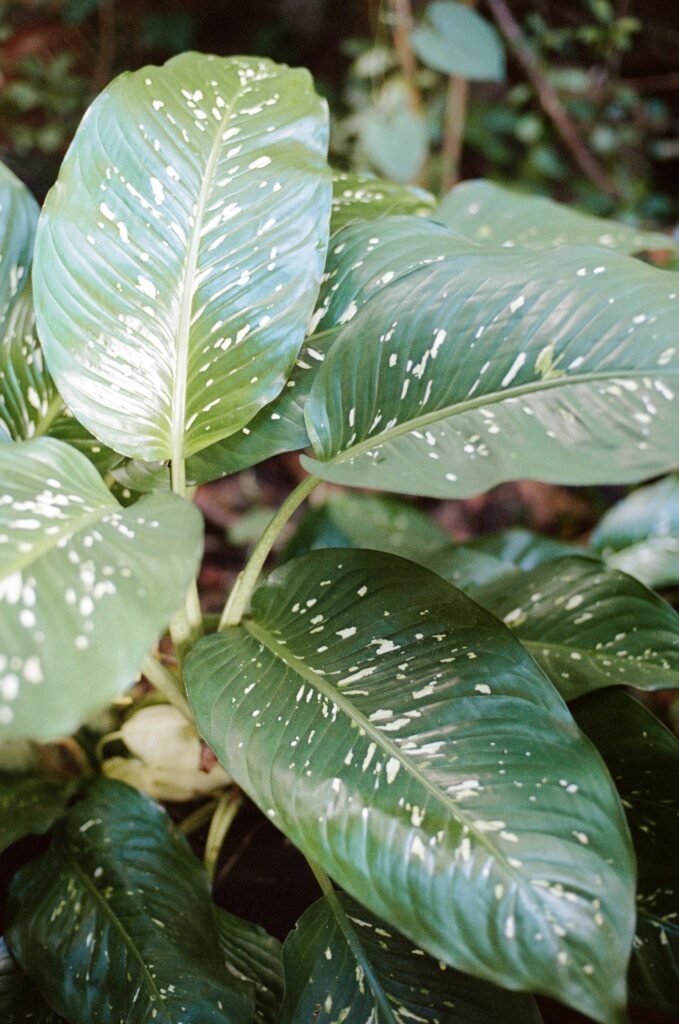
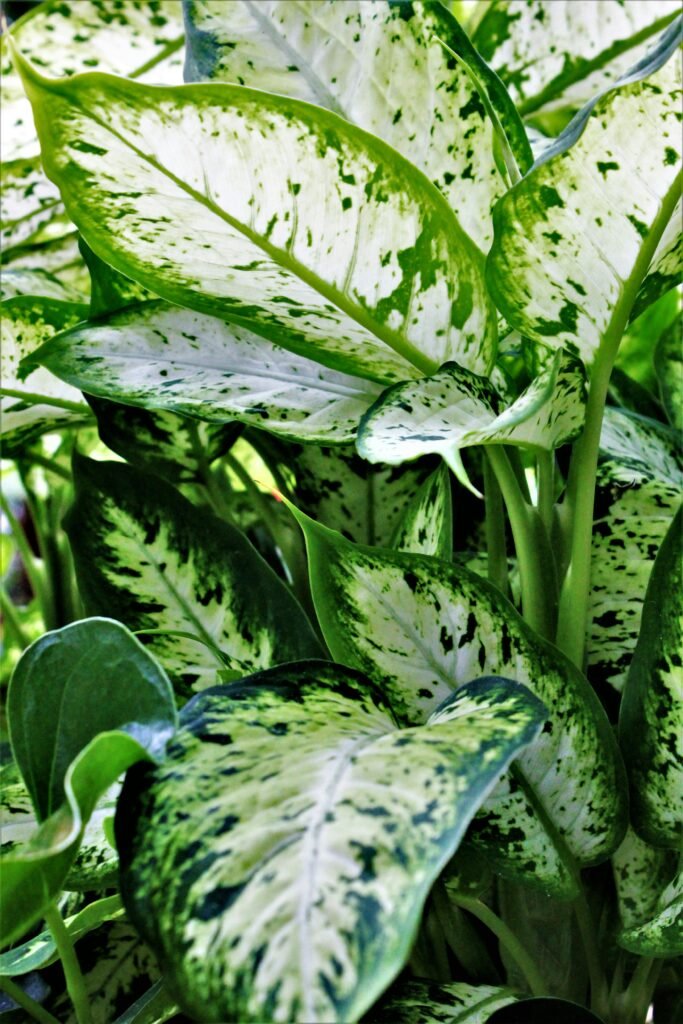
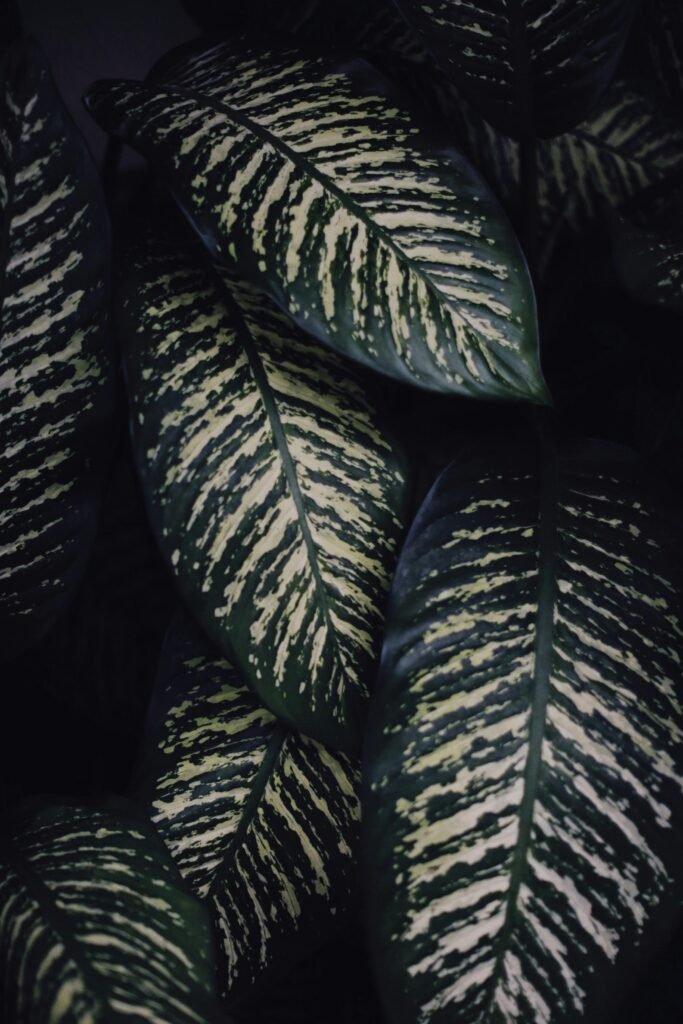
7. Dieffenbachia (Dumb Cane)
Dieffenbachia, often called Dumb Cane, is a lush houseplant known for its striking, variegated leaves. It’s beautiful and bold, but when it comes to cats, this one’s all looks and no love.
It’s nicknamed “Dumb Cane” because in humans, the swelling can temporarily impair speech. In cats, that same reaction can lead to serious distress, especially if the airway becomes inflamed.
It has many different leaf patterns to look out for, but they all look pretty similar.
⚠️ Why It’s a Hidden Danger:
The plant’s thick, fleshy leaves and bright patterns make it appealing to both people and pets. It’s often placed on floors or low tables, which means curious cats can easily get to it.
And while the reaction is usually not fatal, it’s definitely not something you want your cat to go through.
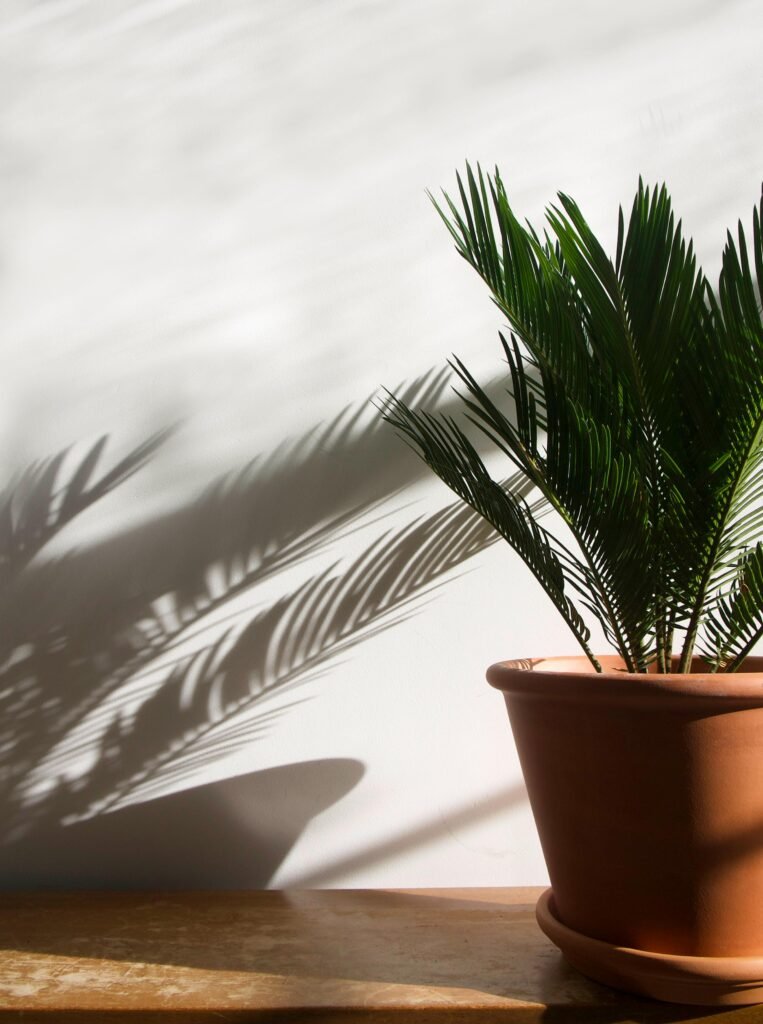
8. Sago Palm
I left the most dangerous for last!
The Sago Palm may look like a miniature tropical dream, but for pet owners, it’s more like a nightmare. While it’s technically a cycad (not a true palm), it’s widely sold as a houseplant or patio plant—and it’s one of the most toxic plants you can keep around cats.
Highly toxic, even a small amount can be deadly. Avoid at all costs.
❗ Why It’s So Dangerous:
Every part of the Sago Palm is toxic, especially the seeds (aka “nuts”). It contains cycasin, a toxin that can cause severe and often deadly liver damage if ingested.
Symptoms of poisoning may include:
Vomiting
Diarrhea
Drooling
Lethargy
Seizures
Jaundice (yellowing of skin or eyes)
Liver failure
Death (in as many as 50–75% of cases if not treated)
🚨 Even a Small Amount Can Be Fatal
Cats don’t need to eat much—a single seed can be deadly. If you think your cat has ingested any part of a Sago Palm, it’s a true emergency. Call your vet or poison control immediately.
⚠️ Why It’s Tricky:
Sago Palms are popular in warm climates and decorative containers. The seeds can fall onto the ground, making it easy for pets to find them. They’re often grown outdoors too, which increases the risk if your cat has access to a patio or yard.
There’s no safe workaround here—this one’s best left at the nursery.
📌 If you already own any of these, keep them out of reach, or consider realistic faux versions.
I actually have a few of these plants, I just keep a close eye on my cat, and gently encourage her to interact elsewhere, and hang the rest.
My cat Sushi, doesn’t really interact with plants, more the soil than anything else. She loves to toss it all over the place.
🪴 How to Cat-Proof Your Plant Space
Even with safe plants, it’s smart to stay a step ahead. Here’s what’s helped me:
Again I’m not asking anyone to throw out their plants, but maybe these will help your curious kitty from getting to them:
Final Thoughts
You can have both, a jungle-inspired home and a happy, healthy cat. With the right picks and a little planning, your indoor oasis can be beautiful and safe.
I know there are plenty of other plants out there that can be harmful to cats—these are just a handful of the more common indoor ones. When in doubt, it’s always best to look it up before bringing a new plant home. A great place to check is the ASPCA’s Toxic and Non-Toxic Plant List.
📥 Download: Cat-Safe Plant Checklist
Get a printable list of cat-safe and cat-toxic plants for quick reference. Hang it on your fridge, share with fellow plant lovers, or keep it handy on your phone.
Coming soon as a freebie!
Related Posts
Newsletter
Signup for Life, Blogging, and Cat tips, & Binge-Worthy Lists!
Thank you!
You have successfully signed up for the Newsletter!

